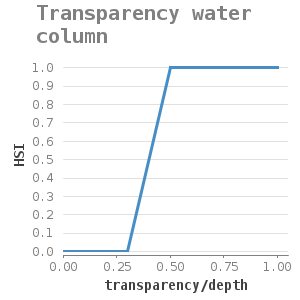H3150 - Natural eutrophic lakes with Magnopotamion or Hydrocharition type vegetation
General
General characteristics |
|
|---|---|
Common name |
Natural eutrophic lakes with Magnopotamion or Hydrocharition type vegetation |
Region |
The Netherlands |
Water system |
Natural eutrophic lakes with Magnopotamion or Hydrocharition type vegetation |
Nature parameter |
habitats |
HR nr |
H3150 |
Fact sheet by |
H. Coops |
Description habitat
General occurrence
The habitat type Natural eutrophic lakes can be found in all sorts of shallow, still water with high natural productivity, such as lakes and pools, ponds, ditches and canals. Natural eutrophic lakes have high nutrient levels because of chemical exchange at the soil, resulting in a higher natural productivity, and are typically species-rich.
The habitat includes various submerged and floating macrophytes.
Natural eutrophic lakes typically contain communities of the Duckweeds association (Hydrocharition, 5Bb), especially the communities Magnopotamion (Stratiotetum), Frogbite (Utricularietum) and Bladderworts (Utricularietum). Duckweed communities (Lemnetalia minoris, 1A) also occur, but are clearly a disturbing influence when dominating. In larger waters, the community of Shining pondweed (Potametum lucentis, 5Ba2) is more prominent.
Characteristic species are: Frogbit (Hydrocharis morsus-ranae), Water soldier (Stratiotes aloides), Bladderwort (Utricularia australis), Common Bladderwort (Utricularia vulgaris), Broad-leaved pondweed (Potamogeton natans), Shining pondweed, (P. lucens), Clasping-leaf pondweed (P. perfoliatus), Fen pondweed, (P. coloratus), Close-leaved pondweed (P. densus), Alpine pondweed (P. alpinus), Variableleaf pondweed. (P. gramineus), various species of Water-starworts (Callitriche spp), various species of Duckweed: Gibbous duckweed (Lemna gibba), Common duckweed (Lemna minor), Star duckweed (Lemna trisulca), Ranunculus (Ranunculus spp.), Crystalwort (Riccia spp.), Yellow water-lily (Nuphar lutea), European white waterlily, (Nymphaea alba), Water violet (Hottonia palustris), Rigid hornwort (Ceratophyllum demersum), Spiked water milfoil (Myriophyllum spicatum), Curly-leaf pondweed (Potamogeton crispus).
For national water ways, it mainly concerns lakes with Pondweeds.
Environmental conditions
Large, still, oligotrophic or mesotrophic lakes with high nutrient levels and high natural productivity, clear water and sheltered circumstances provide optimal conditions for this habitat. In some cases, the type transfers to pondweed waters. Water soldier vegetations are sensitive to internal eutrophications (phosphate mobilisation and enhanced decomposition of organic material). The supply of sulphate rich water can lead to iron shortage, sulphide and ammonium toxicity and growth of duckweed and floating algae beds) (1).
Control and growth opportunities
Water quality management: in case of eutrophication caused by nutrient enrichment or wastewater discharge, algae displace the aquatic plants or the latter suffocate under a thick duckweed cover. Control should primarily focus on good water quality.
The fish stock control can also play a role in some cases. In smaller waters, planting of grass carps and the expansion of fish stock for the benefit of angling can be a threat.
Abundant growth of pondweed may cause nuisance for water sports enthusiasts. Restricted mowing of pondweed can be a solution, but mowing on a larger scale may damage the habitational function for invertebrates and reduce shelter for fish.
Dose-effect relations
Flow chart
Dose-effect relations

transparency/depth |
HSI |
|---|---|
0 |
0 |
0.3 |
0 |
0.5 |
1 |
1 |
1 |
Uncertainty and validation
The above mentioned dose effect relation for transparency/depth is a very rough calculation of the potential area suitable for the growth of aquatic plants in lakes. For applications that are more specific it is advised to use the aquatic plants model MACROMIJ. MACROMIJ has been developed based on data of the IJsselmeer area, but can also be applied to other large lakes.
Applicability
These dose-effect relations apply to large, shallow lowland lakes.
Example project
At present, there is no example of a project available.
References
1 A.J.P. Smolders, L.P.M. Lamers, C. den Hartog & J.G.M. Roelofs (2003) Mechanisms involved in the decline of Stratiotes aloides L. in the Netherlands: sulphate as a key variable. Hydrobiologia 506-509: 603-610.